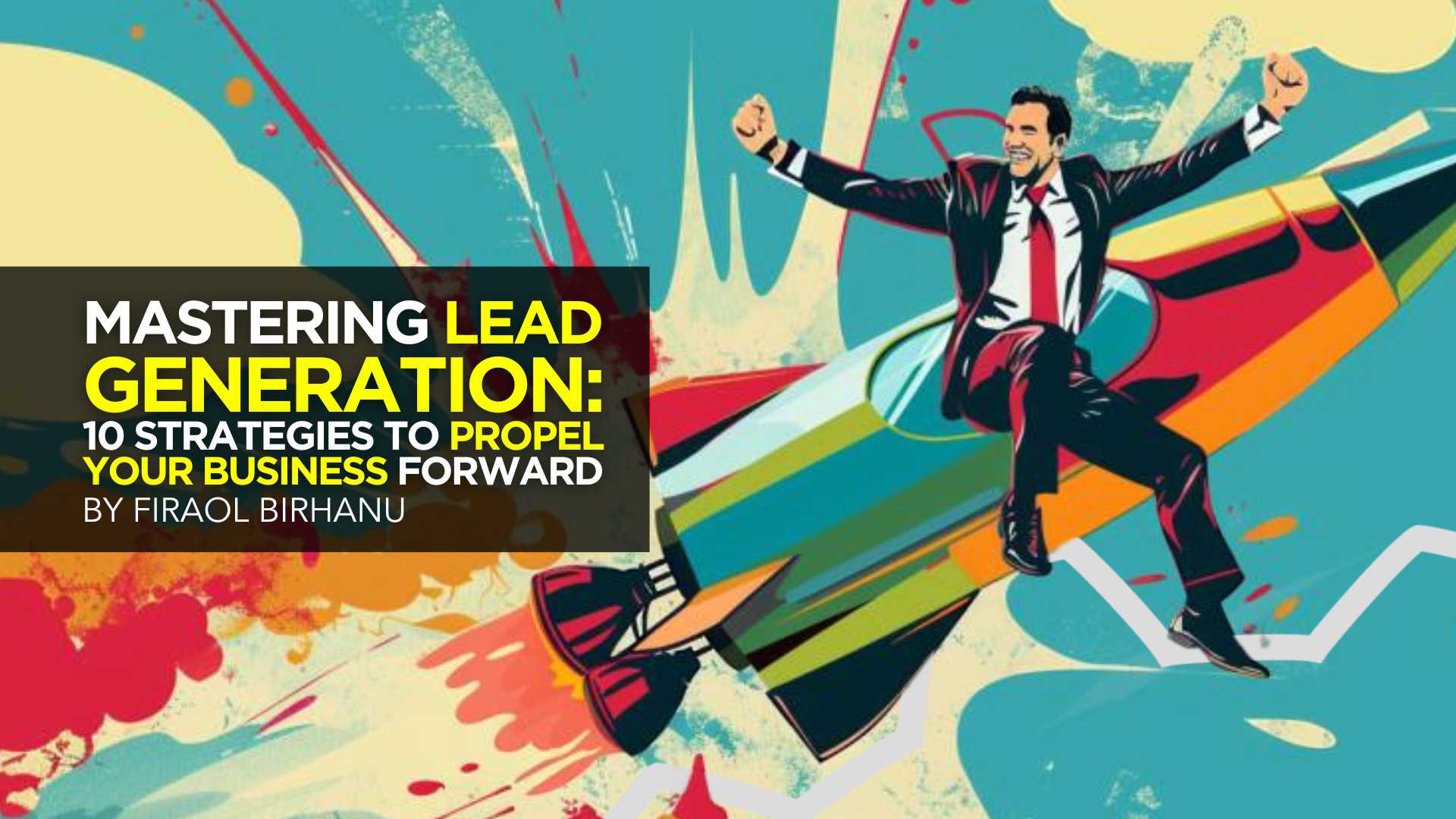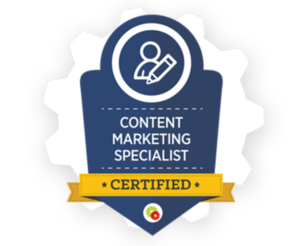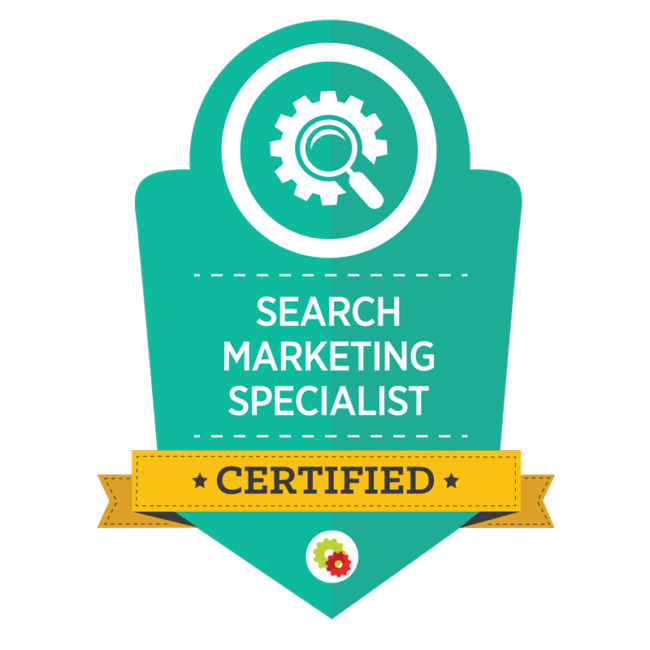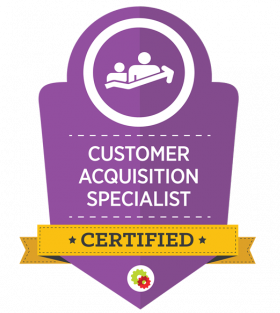MARKETING
Mastering Lead Generation in 2024: 10 Strategies to Propel Your Business Forward


Imagine a world where Sherlock Holmes has the sharpest mind but no intriguing mysteries to solve. Or Iron Man without his tech-suit. They are simply incomplete without one another.
In the same way, lead generation is the lifeline of businesses. Without a consistent inflow of customers, even the best business idea will fail to flourish. And you don’t want that, do you?
This is where we come into the picture. Today, we bring you the top 10 lead-generation strategies that work like a charm in 2024. Each one, when done right, can help you achieve your goal without any difficulty.
So, let’s jump right into it!
1. Content Marketing
7.5 million blogs are published each day. There is a reason why more and more businesses are jumping on the content bandwagon.
This is because the content is just not the king but the entire kingdom! And if you look at it, truly look at it, you will know how true the statement is.
Content is everywhere. From the billboards to radio ads and pop-ups and more, there is no escaping it. But when you have enticing content by your side, that’s a whole other story.
Content marketing goes beyond promoting products. When done right, it helps provide information that solves problems or addresses the needs of your audience. Inclusive content plays a pivotal role here, as it ensures that diverse voices and perspectives are represented, resonating with a broader audience and fostering a sense of belonging.


Want to get certified in Content Marketing?
Leverage the tools and channels to predictably and profitably drive awareness, leads, sales, and referrals—EVERYTHING you need to know to become a true master of digital marketing. Click Here
When you consistently deliver quality content, you can position yourself as an industry authority. This is super crucial because it helps you stand out and build trust and loyalty among your audience. This trust is a key factor in lead generation.
Why?
At the end of the day, potential customers are more likely to consider and choose a brand they perceive as knowledgeable and reliable. It is seen that companies that post 15 blog posts a month generate almost 1200 new leads per month on average.
When it comes to content marketing, the sky is the limit. From blog posts to infographics, content marketing serves as a powerful tool.
2. AI and Personalization
Have you ever noticed Amazon telling you when your favorite product is back in stock? Or Maybe you receive an email from your favorite store with a whopping discount just because they miss you.
So, how does this make you feel? It feels incredible, doesn’t it? This is the beauty of personalization. And they leverage AI to run the personalization process.
Now, put yourself in the shoes of an ecommerce store owner who deals with hundreds of consumers every day. Personalization becomes a bit difficult, understandably. But what if AI could help you out?
Unlike putting in manual efforts, AI uses advanced algorithms and data analysis, which intelligently predicts user behavior and customizes your approach to offer your audience a unique and engaging experience.
This personalized approach not only captures attention but also establishes a deeper connection with potential leads. In fact, 89% of marketers say that personalization fetches them positive ROI.
By understanding and responding to each customer’s needs, AI personalization makes conversion an easy possibility.
Whether it’s recommending relevant products, delivering targeted messages, or predicting user intent, AI makes every interaction meaningful.
And 2024 is a tech-savvy era. With so many OpenAI development companies assisting businesses create their own generative AI model, there is no shortage of tools that can be used for personalizing communication throughout the customer journey. So instead of shying away from technology, it’s high time that you embrace it.
3. Social Media Marketing
From the time of its inception, social media has changed the way we humans communicate and consume content. Today, 66% of marketers generate leads from social media by spending only six hours per week on social media marketing.
Platforms like Facebook, Instagram, and LinkedIn hold so much potential. The key is to come up with a well-structured marketing campaign plan and have engaging content that fully resonates with your audience.


When you come up with a consistent and interactive approach, it builds brand awareness and trust where you easily convert social media users into potential leads.
With social media lead generation tactics, you can check how your content plan is fairing with in-depth insights through analytics. It lets you tweak your approach as you go.
4. Free Demo
Picture this. You are looking to explore a new tool. Everything sounds good on paper but something is holding you back. At the same time, the competitor with similar features offers you a free demo. Which is more enticing? The free demo one right?
Offering product or service demos is a potent lead-generation strategy. It offers firsthand experience, which lets potential customers interact with your offering.
You no longer have to go on and on about how great it can be. Instead, your consumers can go through its functionality to see if it aligns with their requirements.
Remember, with free demos, you are engaging prospects in a practical, immersive way. Demos cut through all the noise and make a lasting impression.
5. Email Marketing
Don’t shun email marketing just because it has been around for quite some time now. It is still powerful and going strong in 2024. It generates $42 for every $1 spent.
Email marketing makes use of targeted campaigns to nurture potential customers. However, plain old boring emails won’t cut. This is the era is all about being different. Don’t hesitate to experiment if you must. The end result must be alluring and personalized messages that solve the specific needs and pain points of your audience.


Strategic segmentation is a must to make sure that each email resonates with its intended audience.
Most importantly, don’t forget to implement calls-to-action and exclusive offers to push your audience to take the desired steps to move them through the sales funnel. Consider incorporating engaging email newsletters to regularly deliver valuable content and updates, nurturing your relationship with subscribers. Again, don’t create emails for the sake of it. Analyze metrics and fine-tune your approach as you go.
6. Search Engine Optimization (SEO)
Your website and SEO go hand in hand. When you amplify your website content, meta tags, and backlinks, you are taking care of SEO. These efforts are rewarded by elevating your online visibility. This is the first step to conversion.
This visibility captivates organic traffic and can convert casual browsers into potential sales leads. Keyword optimization is still a strong SEO tactic in 2024 that aligns content with user intent. This is super crucial to strike a connection between your brand and your target audience.


You’ve Been Taught SEO ALL WRONG
Become a Certified Search Marketing Specialist and Start Boosting Your Sales by Attracting and Converting Your Ideal Leads Everywhere They Are.
As your SEO efforts start making a mark, your website ranking starts climbing upward and soon reaches the first page. However, it is important to be patient with SEO as it can take at least six months.
7. Paid Ads
As aforementioned, social media is a powerful lead-generation strategy. However, if you are looking for quick results, paid ads are incredible.
50% of people arriving at a retailer’s site from paid ads are more likely to buy than those who came from an organic link.
Paid ads are like a shortcut that lets you reach specific audiences with precision and in no time. Platforms like Google Ads, LinkedIn Ads, Instagram Ads, and Facebook Ads offer robust targeting options.
Additionally, tapping into ad networks such as the Google Display Network or Twitter Audience Platform expands your campaign’s reach across a wide array of websites and apps. What does this mean? It’s simple. Your message reaches users interested in your products or services.


The Industry’s Most Comprehensive Paid Traffic Certification For The Post-Privacy World
Overcome iOS updates, crumbling campaigns, and surging ad costs by mastering the most cutting-edge media buying strategies from the top traffic experts in the game today.
But paid ads are no magic. It is all about the strategy and efforts you put into it. With careful keyword selection and demographic targeting, paid ads maximize visibility.
The beauty of paid campaigns is that they generate likes in its immediacy. It offers quick results, which drives potential leads to your website or landing page.
The best part is that you can keep an eye on the metrics and adjust campaigns in real time. You can leverage an AI Ads generator to create compelling ads that will get you better results.
8. Chatbots
Chatbots can be your secret weapon when it comes to lead generation. Why? Because they provide instant and personalized interactions on websites.
As mentioned earlier, we live in a tech-savvy world. So, an AI-driven virtual assistant can engage visitors, answering queries, and guiding them through the initial stages of the sales funnel.
Your AI assistant can also collect user data and preferences. The immediate response and 24/7 availability can improve user experience. After all, if someone is there for you whenever you need them, it just makes you feel good!
9. Influencer Marketing
The influencer marketing industry is now at $21.1 billion, and it has only seen upward growth since it became popular in the recent decade. So, in this era when everyone relies on social media, influencers can help you reach your goals quite effortlessly.
Here, you partner with influencers whose ideologies resonate with your brand value. You use the trust and credibility these influencers have built within their niche and tap into their established audiences.


For instance, let’s say you are a skincare product. You can collaborate with a well-known influencer for an authentic endorsement. This type of social proof can do wonders.
By strategically partnering with relevant influencers, you can generate high-quality leads who are already interested in your products or services, making influencer marketing a powerful tool for B2C lead generation.
10. Webinars
When it comes to lead generation, webinars may be the last thing on your mind. But it’s time to give this idea some merit. 89% of marketers say that webinars perform better than other channels when it comes to producing qualified leads.
One of the reasons why it strikes the right cord is because it combines education and engagement. Hosting webinars positions your brand as an industry authority. When the quality of your webinar is high, it helps attract a targeted audience looking for valuable insights.
During your webinar, make sure you address queries in real-time. This instantly creates a direct and personal connection.
Also, attendees willingly provide contact information to access the event. It helps you with a set of engaged prospects for post-webinar follow-ups.
Bonus: Use Q & A Platforms Like “Quora”
Quora has over 300 million monthly visitors. You might have logged in too in search of a solution. We all do. However, the platform is still underestimated in marketing circles.
If you are wondering how Quora can help you, well, it helps businesses understand the audience’s problems by providing a space for users to pose questions and seek answers.
Let’s say, you are an agency. You come across a question about content marketing. Now, avoid fluff and advertisement-like content at all costs. Instead, be genuine and write authentic answers. In the end, direct users to your website. Do it strategically to convert a Quora user into a qualified lead.
Final Words
As a business owner, you already know how crucial lead generation is for you. But the key lies in choosing the right set of strategies that align with your business needs.
Remember, what works for business X may not work the same way for business Y. Lead gen is never a one-size-fits-all solution. That said, when you implement the top tips we have discussed in the above article, you are bound to make a mark.

















